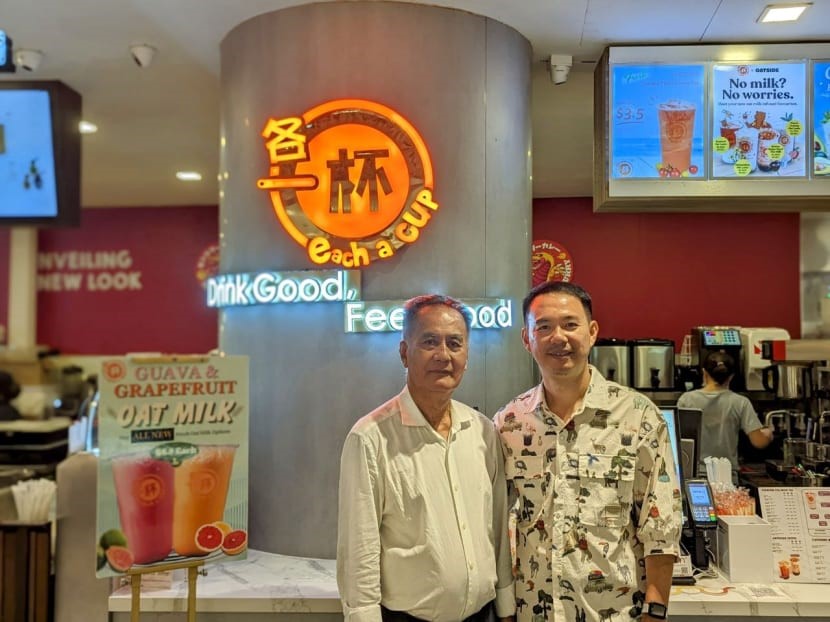1999 marked the onset of Singapore’s bubble tea craze. Back then, as an eight-year-old, the only decision required of me was choosing between the green apple and grape-flavoured ice-blends. The icy slush alone cost S$2.50, but adding pearls for an extra 30 cents was a no-brainer.
Fast forward 24 years, and most of the prominent brands from my childhood, which marked the first wave of the bubble tea craze in Singapore, have faded into oblivion. Yet, there is one that has managed to defy the odds and survive the tumultuous journey of the industry: Each-A-Cup.
How did they do it? To uncover the secret behind their enduring success, CNA Lifestyle sat down with the founder, 73-year-old Michael Chua, and his son Ivan Chua, aged 45.
“EVERYONE KNEW EACH-A-CUP”
Before Michael’s foray into the F&B industry, he had a remarkable career as a musician. Specifically, he was the guitarist for the renowned Taiwanese songstress Teresa Teng.
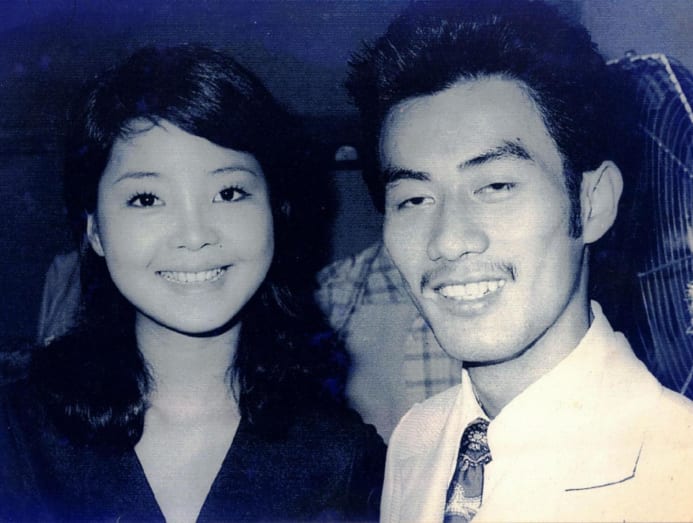
For nearly a decade, his life revolved around touring, spending extended periods of up to three months in countries like Indonesia and Vietnam. It was during this time that fate brought him together with his future wife, a talented pianist who accompanied Chinese singer Ching Shan on stage.
“I made a lot of money during that time, and it was all in US dollars. But I gave up my career at the age of 16 to do business. I had no experience, but I didn’t mind trying,” he recounted.
He first dabbled in entrepreneurship in Taipei, a city he had grown fond of during his touring days. There, he founded an ice cream business that would later be known as Gelare. After keeping at it for nine years, he joined forces with a customer-turned-friend to create a beverage business called Healthy 2000.
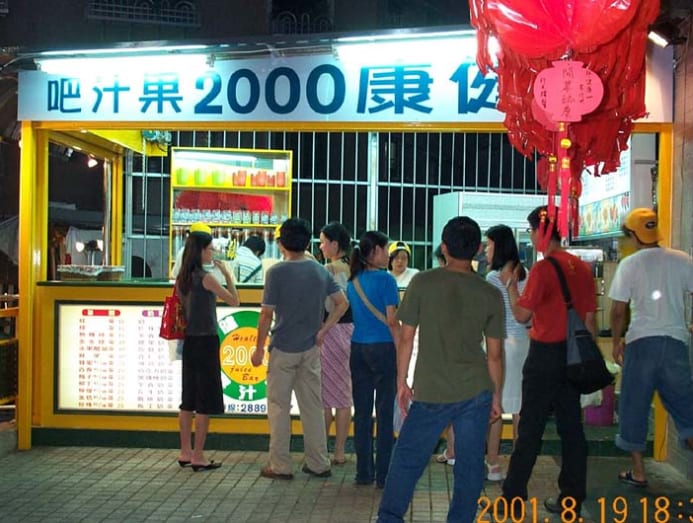
Healthy 2000 was the precursor to Each-A-Cup, with over ten outlets in Taiwan offering various wellness concoctions, including fruit juice. Michael noted that Taiwan’s bubble tea industry was already well-established and significantly ahead of Singapore at that time.
“It’s already 60 to 70 years old. Maybe even 80. Pearl milk tea had existed since day one, and my associate’s father had already been in the business for 50 years when I first met him,” he explained.
Sensing the burgeoning interest in bubble tea in Singapore around 1999, Michael returned to his home country and rebranded Healthy 2000 as Each-A-Cup. In the early days, their bestsellers were ice-blended drinks. While the popularity of classic offerings like green tea and milk tea continued to endure through the years, he speculated that blenders might reclaim popularity due to the rising temperatures.
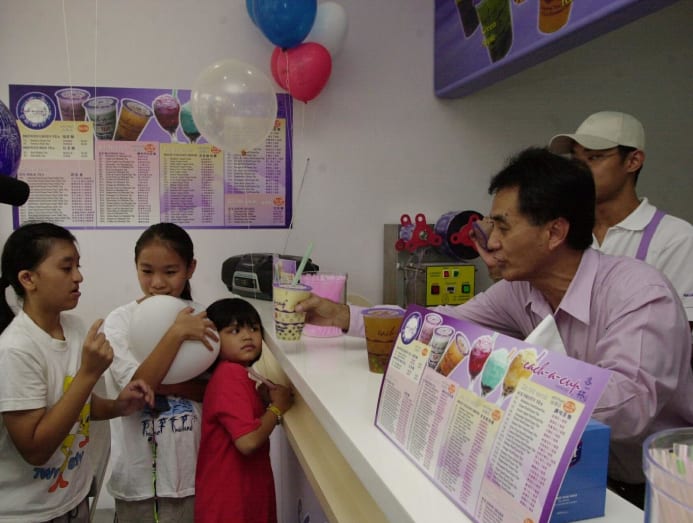
Rivals who rode the first wave included Quickly, Happy Cup and Cool Station. Even though their launch predated social media, they seldom advertised. They didn’t need to. The novelty and quality of their beverages spoke for themselves.
“Everyone knew Each-A-Cup. We had plenty of shops and we were in the papers. I remember one time, we had a roadshow in Tampines near Block 800. It was very, very crowded.”
But little did Michael know their bubble was about to burst.
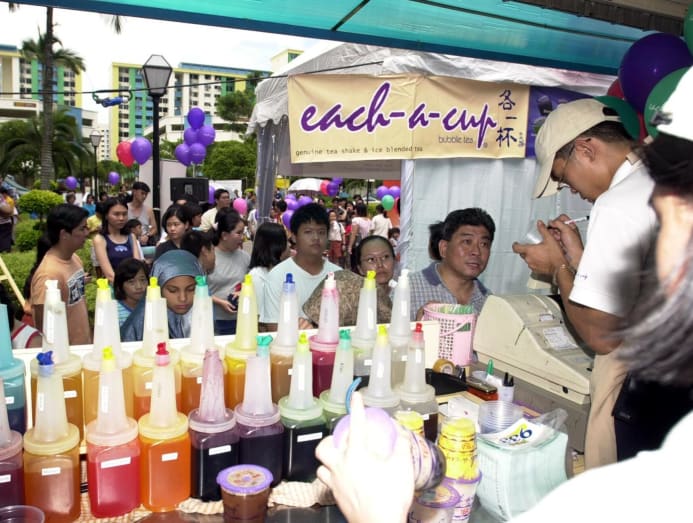
“BUBBLE TEA BECAME WORTHLESS”
In 2001, the bubble tea industry in Singapore experienced a drastic shift as prices plummeted from S$3 to S$1 almost overnight. The market became oversaturated with an astounding 700 bubble tea shops packed into the tiny red dot, as Michael recounted. But that wasn’t all.
“It was the lack of training. Everybody anyhow franchise and their drinks became diluted. Iced coffee didn’t taste like coffee, it tasted like water. Customers buy and throw. Bubble tea became worthless.”
As the bubble tea craze imploded, operators found themselves burdened with excess stock that was going to expire. In desperation, they gave away free bubble tea to dispose of expiring batches and sold the remaining stock at heavily discounted prices. Even reputable shops that maintained the quality of their offerings were unable to escape the impact of these adverse market forces.
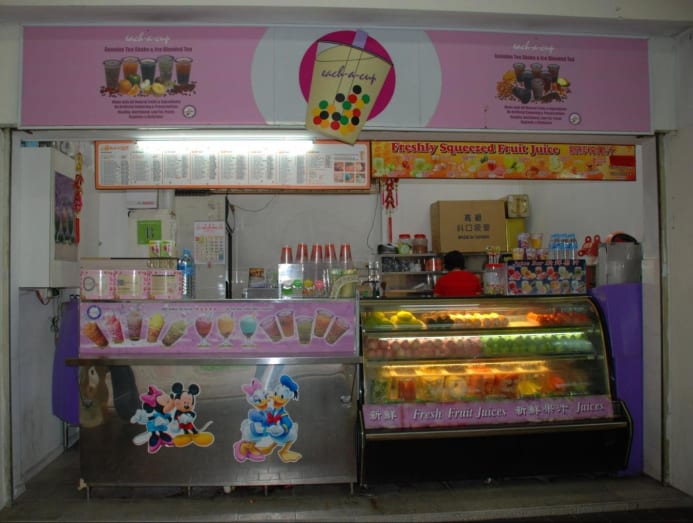
“I lost over S$400,000 in a year. I had 50 outlets at first and I was left with 15. I closed 35 outlets, yet I still lost so much money,” Michael reported. The third quarter of 2001, he recalled, was the toughest time of his life.
Even as the first wave of the bubble tea craze appeared to crash down around him, with rival brands bowing out of the race one after another, he remained determined to sustain the business. The reason? He didn’t believe that bubble tea had become irrelevant.
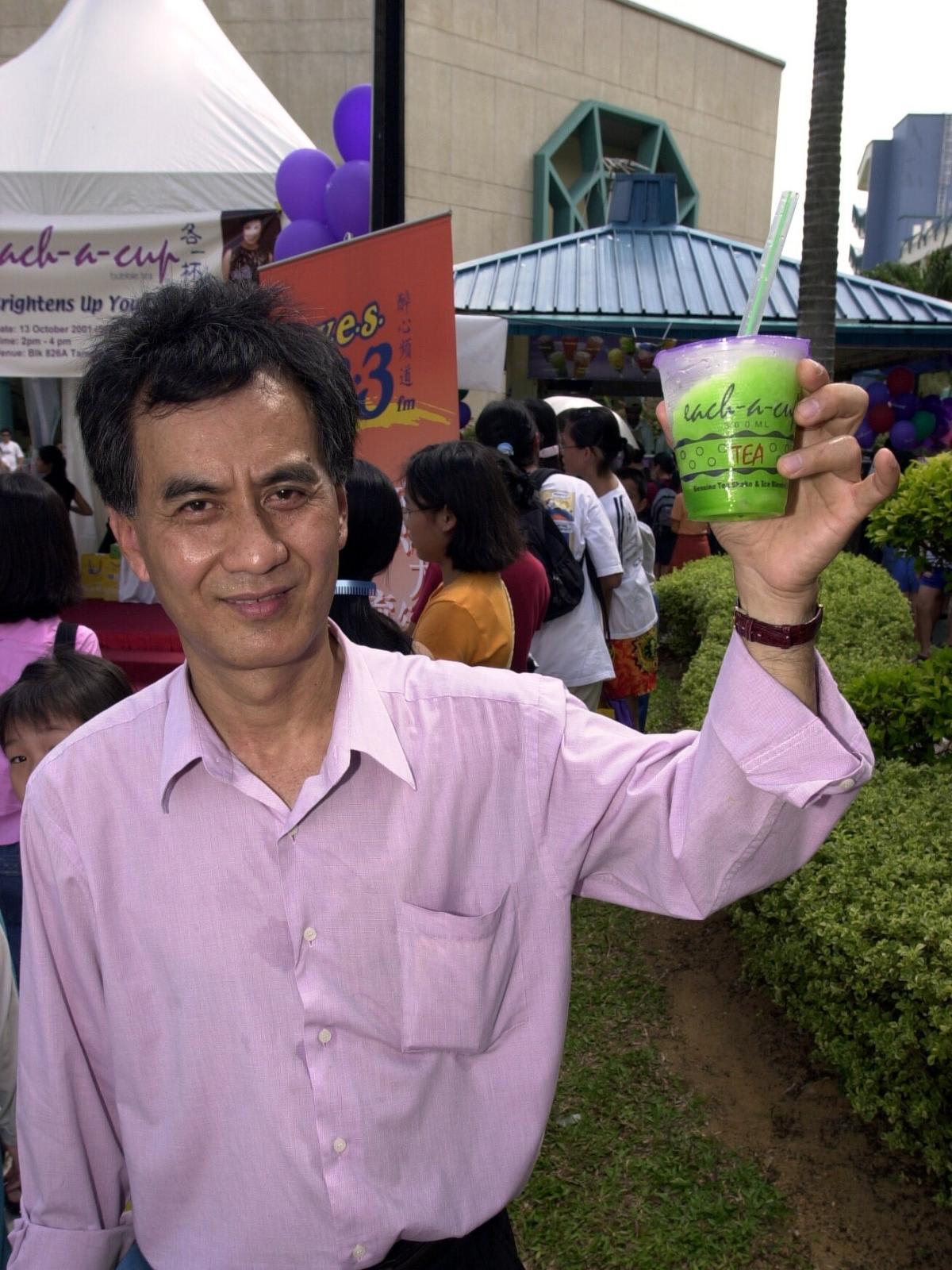
“I was the only one left. The last one (standing) was Cool Station. I still remember, you know. They kept going for a very long time before closing down. But, six to nine months later, the industry took a turn for the better. So they were quite unlucky.”
THE SECOND WAVE OF THE BUBBLE TEA CRAZE
After two long and bitter years, Each-A-Cup finally managed to halt its losses in 2003. The following years were dedicated to rebuilding the business, and Michael became more cautious with spending than ever before.
Meanwhile, Ivan, after gaining valuable experience in multinational corporations (MNCs), was preparing to join his father’s venture in 2007. But his involvement in the family business had actually started much earlier, back when he worked part-time as an ice cream scooper at Gelare.

“I remember you really had to use a lot of strength, especially early in the morning when the freezer was so cold. The ice-cream was rock-hard,” he recalled.
His field experience at Each-A-Cup began at the former Lido Theatre, where he had to manage the outlet alone with only two days of training. (These days, training takes anything between two weeks to two months.)
“The very first night, when the movie buffs arrived, that was when I started fighting the war. The difficult part was being fast and accurate. During those days, we didn’t even have a sugar machine. It was very stressful to see a dragon’s queue,” Ivan recalled.
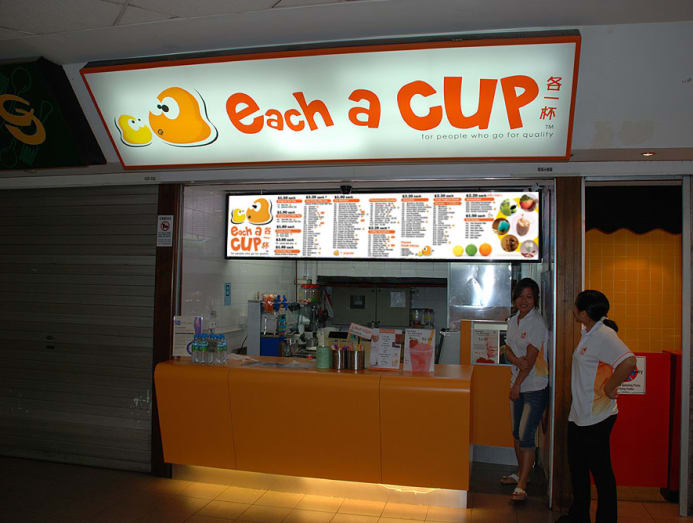
The experience at the unforgiving Lido Theatre outlet left a lasting impression on Ivan. Today, he still feels the same adrenaline rush when working alongside his crew at the shop. His parents’ training method, which focused on speed and efficiency, has been passed down to the current workers as well.
“That’s how my parents trained me and the current workers. Those who work directly under them will be extremely fast.”https://www.instagram.com/p/CWpPeS3veid/embed/captioned/?cr=1&v=14&wp=822&rd=https%3A%2F%2Fcnalifestyle.channelnewsasia.com&rp=%2Fdining%2Feach-cup-bubble-tea-singapore-michael-chua-ivan-chua-366931#%7B%22ci%22%3A0%2C%22os%22%3A3129.5%7D
Ivan’s entry into the business coincided with the rise of the second wave of the bubble tea craze, with new players like Cup Walker, Tea Tree, and Koi entering the market. While the catastrophic crash of 2001 was not likely to recur, deciding where to set up shop was a precarious task.
Michael pointed out that the Parkway Parade neighbourhood was particularly challenging for bubble tea operators.
“If you open one outlet there, surely business will be very good. Two outlets, can. Three outlets, it’s already shaky. Four outlets, all tak boleh tahan (cannot endure) already. Five outlets, one of the above will surely close,” he said.
STANDING OUT WITH AN “TAIWANESE TASTE”
Up till the 2010s, Each-A-Cup’s menu had predominantly catered to consumer preferences in Taiwan, boasting what Ivan referred to as an authentic Taiwanese taste. Staying true to their roots from Healthy 2000, Each-A-Cup employed minimal artificial essences and favoured fruit concentrates over sugary syrups and cordials in their beverages.
“When the flavour is strong, consumers will think it’s good quality. But, actually, a lot of artificial ingredients may have gone into it.
In 2013, Each-A-Brew was introduced to enhance the Taiwanese tea experience for their customers. This innovation utilised the Teapresso technology, allowing Each-A-Cup to freshly brew teas upon order and customise the tea’s concentration levels according to individual preferences.

Teas like jasmine and osmanthus particularly benefited from this extraction machine, preserving their flavours without dilution even as ice melts. However, introducing such a sophisticated brewing method came with challenges – complaints from customers who were unaware of the effort and value behind the process.
“Sometimes, we leave the tea bags in so the flavour wouldn’t be diluted after the ice melts. But customers complain: Why did you throw something like this inside? They don’t know that this method is probably worth S$7 or S$8 in cafes out there.”
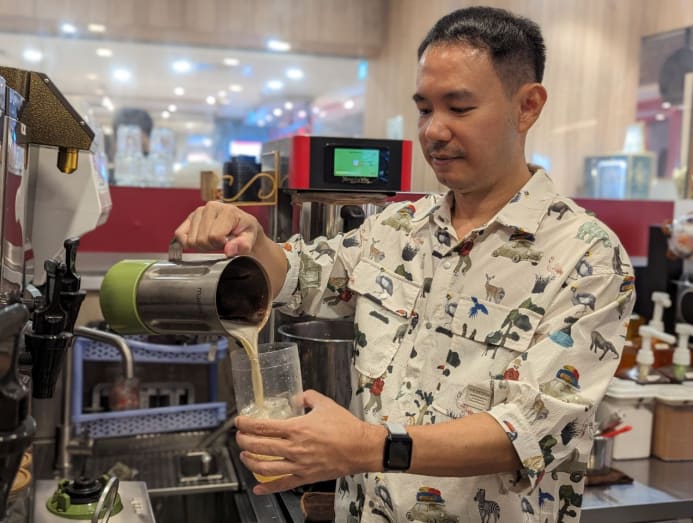
Each-A-Brew was designed to complement their existing bulk brew method, commonly used in many bubble tea shops. That being said, Ivan prefaced that Each-A-Cup brews their teas in smaller batches to guarantee freshness and minimise wastage.
“Our staff knows how to estimate and our warmers are never completely full. This ensures that (the stock) will finish in two hours. For peak periods or peak periods, we fill half the warmer or even more,” he said.
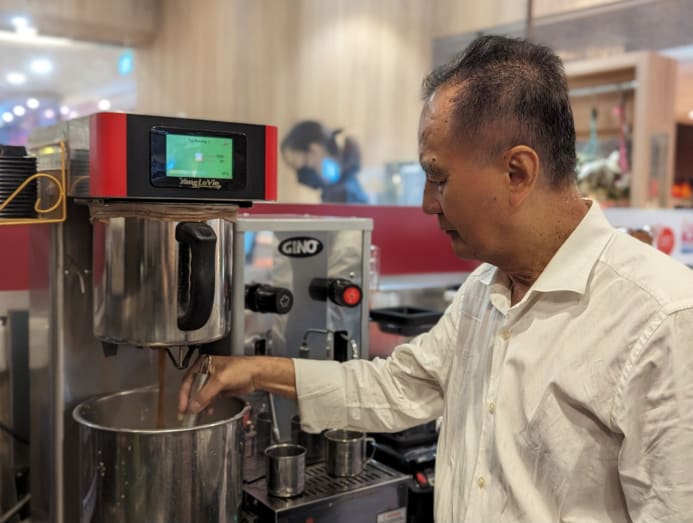
Their dedication to promoting Taiwanese tea culture has earned Each-A-Cup a loyal following. These regular customers are well-acquainted with the brand’s processes, specifying their preferred tea concentrations or even requested off-menu beverages.
“What they want is a genuine type of tea, and this is exactly what we provide. We don’t really fight with new brands head-on. Our product range and prices are different,” Ivan said.
“ONE OF THE CHEAPEST MILK TEAS TODAY”
Each-A-Cup is not impervious to the rising costs affecting various aspects of their business, including manpower expenses, CPF contributions, levies, and other operational costs. Yet, their pearl milk tea at the ION Orchard outlet remains one of the most affordable options in town.
“We have one of the cheapest milk teas today. It’s very value-for-money,” Michael quipped.
Maintaining affordability is at the heart of Each-A-Cup’s vision. In a market where competitors may rely on flashy packaging and extravagant machines to attract customers, they hope their patrons can value the product for what it truly is: A great cup of tea.
Where does the industry veteran think the market is headed from here on out? Despite the looming possibility of a recession, Michael remains optimistic.
“I don’t think there’ll be a third or fourth wave. It will maintain because the new entrants are mostly professional. Now it’s all location. If your location is good, business will surely be good. If your location is lousy, whoever goes there will also die,” he said.
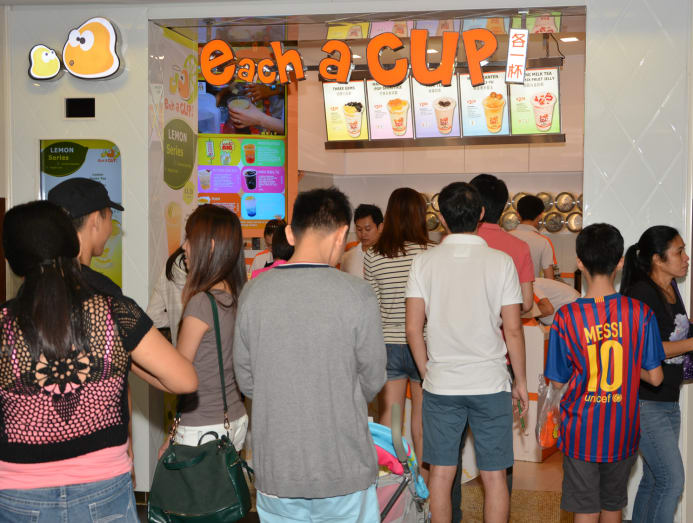
It sounds like the industry may see a case game of “blow wind blow”, where seasoned players with skin in the game may shuffle across the island without leaving the arena. This is unsurprising, given that bubble tea has transitioned from a fad to a fixture over the years.
Asked about his plans for retirement, Michael said he’s ready to start enjoying his golden years anytime. However, Ivan tells me that the 73-year-old is “still very much involved in the business”. He continues to visit Each-A-Cup’s outlets whenever they receive customer complaints, and he even accompanies their delivery personnel on their rounds.
“He’s very energetic. More energetic than many of the young people in Each-A-Cup.”


